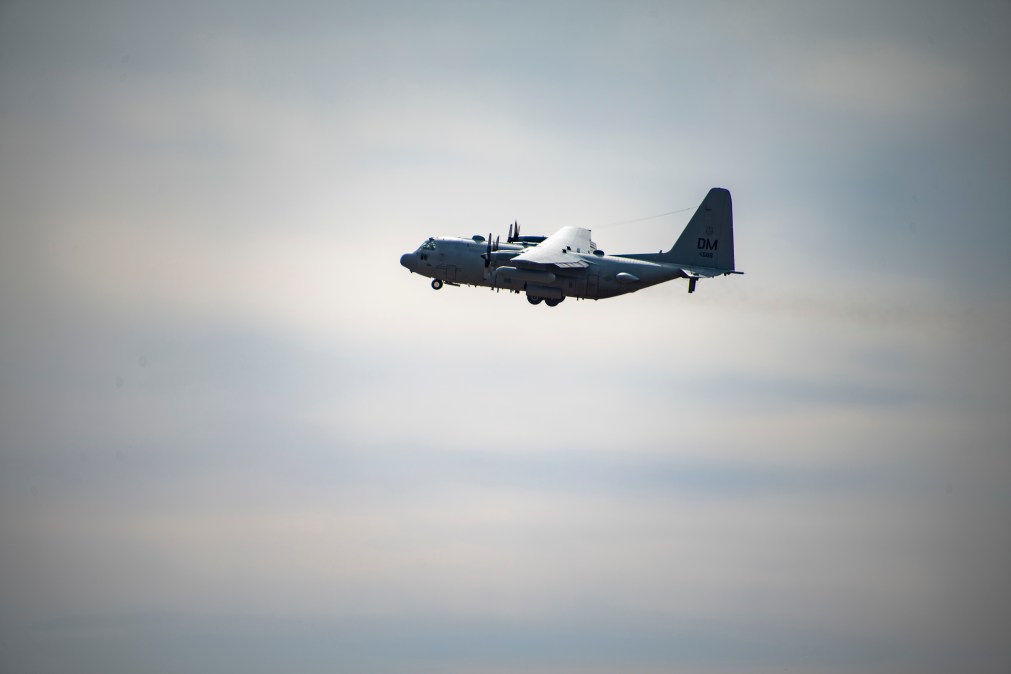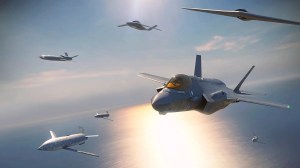Air Force ‘sprint’ is identifying new capabilities for electronic warfare superiority

The Air Force’s electronic warfare “sprint” will focus on identifying gaps and directing new systems to buy to close them, according to a senior service official.
In September, the Air Force announced a sprint within its office of the deputy chief of staff for intelligence, surveillance, reconnaissance and cyber effects operations, A2/6, to do analysis on gaps and requirements concerning the electromagnetic spectrum and electromagnetic spectrum operations, or EMSO.
“EMSO, unfortunately, it’s been one of the most neglected mission areas for the past three decades and it was a victim of the fight that we evolved to go after,” Maj. Gen. Daniel Simpson, assistant deputy chief of staff for intelligence, surveillance and reconnaissance, A2/6, told DefenseScoop in a recent interview. “Now, against a peer competitor, those kinds of threats, it needs to be reenergized. But those muscles — they atrophy a lot more quickly than we’re able to build them back.”
Following the Cold War, the services divested and deprioritized electronic warfare systems, especially during the counterinsurgency wars against a technologically inferior enemy.
Now, with the return of so-called great power competition, all the services are recognizing the importance the spectrum will likely play in future conflicts.
As Air Force officials briefed Secretary Frank Kendall on the state of play within EMSO, Simpson said the service leader recognized its criticality and requested an effort on par with his seven operational imperatives for the force, which are his top modernization priorities.
Kendall request “an EMSO cross-cutting operational enabler team to take a look at gap analysis … [and] prioritize EW capability recommendations that goes after their gaps, specifically to inform resourcing,” Simpson said, paraphrasing the secretary.
“We have an EMSO strategy, but tell me what we need to buy. And it needs to be something more than a self-protection jamming capability for some of our fighters,” he added, again, paraphrasing the directive from the service leader.
Since then, the A2/6 has been moving out mirroring the operational imperatives, developing an operations team, acquisition lead and conducting an in-depth intelligence and threat-informed baseline for comprehensive gap analysis. Officials will work to develop priorities of recommendations to bring to the Air Force secretary and chief of staff.
Right now, some of those priorities include offensive capability investments that disrupt adversary kill webs, while defensive capability investments seek to protect friendly and allied assets.
The sprint is looking more at investment decisions for actual capabilities as opposed to new force structure. In 2018, the Air Force embarked on a multiyear journey under what it called the Electric Warfare Enterprise Capabilities Collaboration Team, to study spectrum superiority. At that time it believed it was falling behind adversaries such as Russia and China.
That study produced three non-materiel solutions, to include the establishment of an EMS superiority directorate within the Air Force headquarters, consolidating EMS services and software programming into a single organization — which culminated in the creation of the 350th Spectrum Warfare Wing — and creating education programs to develop an EMS “warrior ethos.”
The Air Force is beginning to budget for some of these new capabilities and systems for the sprint.
“Our Secretary is using those to drive [program objective memorandum] decisions and how do we take some of the Air Force money to get after what he sees are shortfalls of capabilities, to be able to mitigate the shortfalls,” Simpson said, referencing how the Pentagon does budget planning in five-year increments. “When we get done with [fiscal year] ’25, now we’re going to have to start working on FY 26. This is one that is going to take a lot of continuous effort to keep moving it down the path.”
Simpson said several of these efforts will remain classified, shielding them from public releasability.
He did offer that the Air Force team is working across the joint force with sister services to take advantage of investments already being made.
“It is a joint approach,” he said. There’s “heavy integration with the Navy right now and then a lot more with the Army, and [we’ve] been starting to with the Marine Corps from their capabilities they have from a ground-based perspective,” he added.






